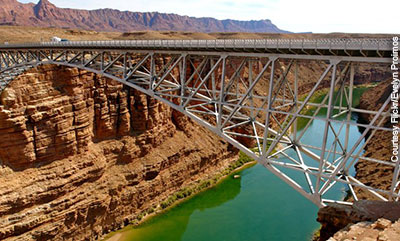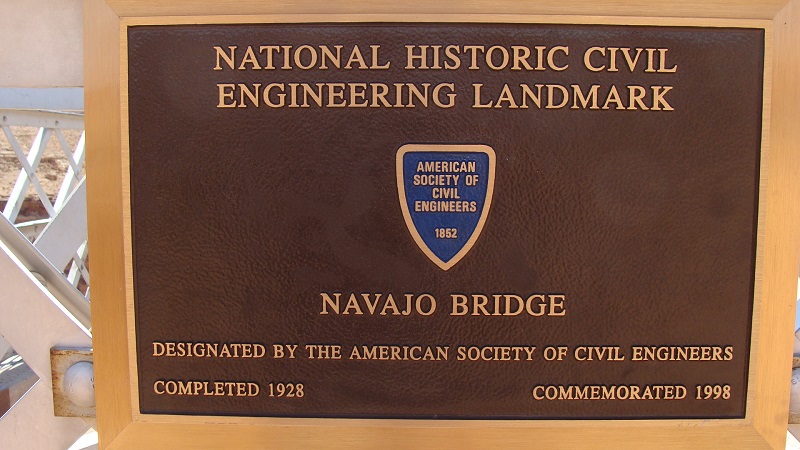Navajo Bridge
36 49 03.4 N
111 37 52.3 W

At the time of its construction, the Navajo Bridge was the highest steel arch bridge in the United States, and, at the time, was the only roadway crossing of the Colorado River for 600 miles.
Navajo Bridge spans Marble Canyon, 470 feet above the Colorado River in Grand Canyon National Park. It was considered the highest steel arch bridge in America when completed.
The Navajo Bridge (also known as the Grand Canyon Bridge) was built in 1929 by the Arizona Highway Department and provided a vital transportation link over the Grand Canyon between northern Arizona and southern Utah. Construction commenced by building on one side of the canyon, then on the other, until the two sides met in the middle.
During construction, a ferry was essential for transporting men, tools, construction materials and heavy building equipment. However, on June 7, 1928, high waters, a weakened ferryboat, and worn cables resulted in disaster. The ferry capsized with three men and a Model T Ford on board. Coconino County refused to replace the ferry, causing extensive construction delays. For the next seven months, construction equipment and materials were brought in by truck, requiring an 800-mile journey around the canyon.
Facts
- Navajo Bridge spans Marble Canyon, 470 feet above the Colorado River in Grand Canyon National Park and was considered the highest steel arch bridge in America when completed.
- The 750-foot-long steel bridge includes a 616-foot, three-hinged spandrel arch main span. It replaced Lees Ferry as the sole crossing of the Colorado River within a distance of 600 miles.
- The bridge was functional for the era in which it was constructed. However, its load capacity of 22.5 tons and width of just 18 feet failed to serve the needs modern vehicles. Studies began in the early 1990s to determine the best solution to the problem. Consideration was given to strengthening the bridge, but the costly option was deemed impractical. Several alternate sites were considered, but the final decision was to build a stronger and wider parallel bridge beside the existing structure. The new bridge was completed in 1995 and the original structure remains in service as a pedestrian crossing.


